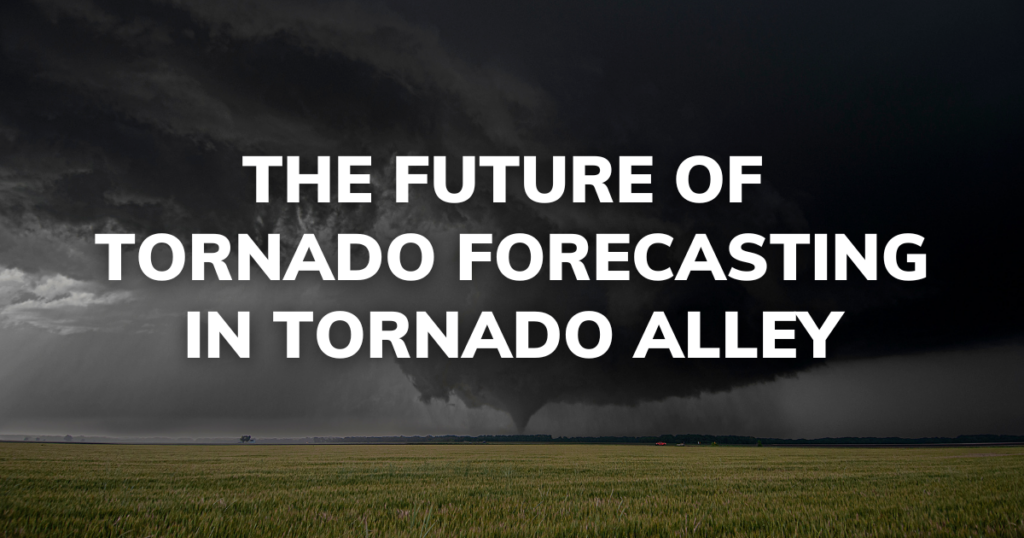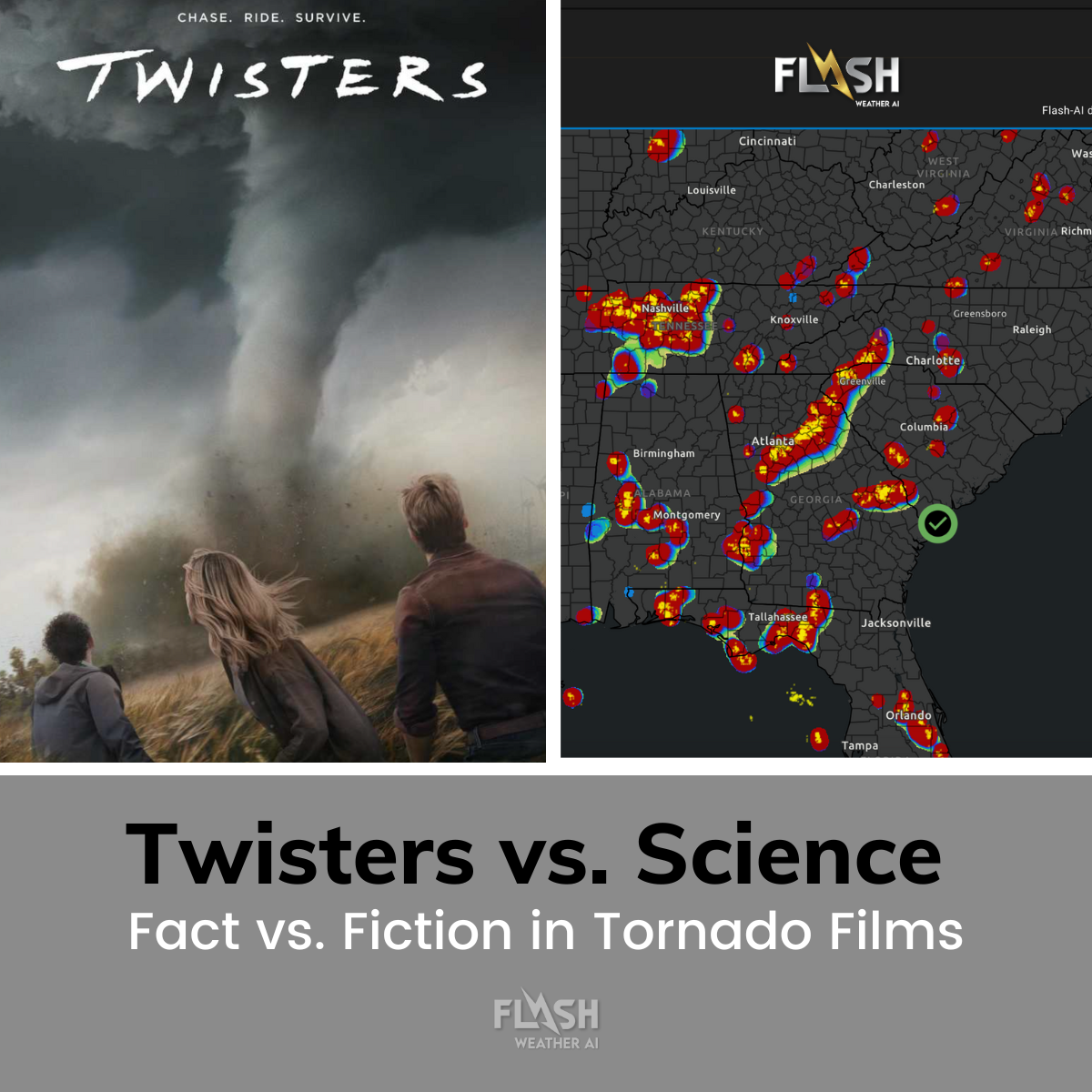
The Future of Tornado Forecasting in Tornado Alley
Protecting Lives with Advanced Forecasting in Tornado Alley
Tornadoes are one of nature's most powerful and destructive forces, capable of causing widespread devastation in just minutes. The United States accounts for over half of the world's reported 2500 tornadoes annually. Other regions that experience tornadoes include Canada, Europe, Australia, and parts of South America, Africa, and Asia. Among all the countries in the world, the United States experiences the highest number of tornadoes, with over 1,500 recorded annually.
This staggering number is significantly higher than that of Europe, which averages around 300 yearly tornadoes. The U.S. is home to Tornado Alley, a region encompassing Texas, Oklahoma, Kansas, Nebraska, and South Dakota. Due to its unique geographical and climatic conditions, this area is notorious for its frequent and severe tornado activity.

Why the U.S. Experiences More Tornadoes
The prevalence of tornadoes in the United States can be attributed to a combination of geographical and climatic factors that create the perfect conditions for tornado formation.
Geography: The central U.S. is characterized by vast, flat terrain that allows warm air to rise quickly, a key ingredient in the development of severe thunderstorms. This region is bordered to the south by the Gulf of Mexico, which provides a continuous supply of warm, moist air and instability. At the same time, cooler air masses descend from the Rocky Mountains to the west. This clash of air masses is a significant driver of tornado formation.
Climatic Conditions: The interaction between the warm, moist air from the Gulf of Mexico and the cold, dry air from the Rockies creates a volatile environment conducive to severe thunderstorms. These storms, in turn, can spawn tornadoes. The unique conditions in Tornado Alley, where these air masses frequently collide, create what many meteorologists call a "perfect storm" scenario for tornadoes.
Tornado Alley: While Tornado Alley is not a formally defined area, it generally refers to the central U.S., where the frequency of tornadoes is highest. This region's flat landscapes and the climatic conditions described above make it particularly prone to tornadoes. The combination of warm, moist air, cold, dry air, and flat terrain creates an ideal environment for developing rotating thunderstorms that often lead to tornadoes.

"Twisters" and Tornado Science
The fascination with tornadoes has made them a popular subject in film, with the recent release of "Twisters" reigniting interest in these powerful storms. A sequel to the 1996 classic "Twister," the movie follows storm chasers as they confront a massive tornado outbreak in Oklahoma. The film's protagonist, Kate Carter, attempts to use advanced technology to make a tornado vanish—a concept that, while intriguing, remains largely in the realm of science fiction.
Tornado Dispersal Technology: In "Twisters," Kate's character deploys canisters designed to react with the moisture in the tornado, theoretically weakening it. Using chemicals to absorb moisture and potentially disrupt a tornado's formation is scientifically plausible. However, the scale required to have a meaningful impact on a tornado is immense—experts estimate that it would take around 22,000 tons of material to affect a tornado, making on-site deployment impractical.
Real Tornado Science: While movies like "Twisters" provide thrilling entertainment, the reality of tornado science is far more complex. Despite ongoing advancements in meteorological research, our ability to control or influence tornadoes remains minimal. The movie's portrayal of tornado science highlights meteorologists' challenges in predicting and understanding these unpredictable storms. Tornadoes are complex systems, and while we have made significant strides in forecasting them, there is still much we do not understand.
How Flash Weather AI Can Help
In the face of such formidable natural phenomena, accurate forecasting and timely warnings are essential for protecting lives and property. This is where Flash Weather AI comes into play. As an innovative platform designed to enhance weather forecasting, Flash Weather AI offers several features that can significantly aid in tornado prediction and response.
Proactive Weather Intelligence: Flash Weather AI provides highly accurate forecasts, helping communities prepare for severe weather events, including tornadoes. With an accuracy rate of up to 99.6% and updates every two minutes, the platform ensures that decision-makers have the most current information, allowing for timely and informed responses to impending storms.
Lightning Prediction: One of the key features of Flash Weather AI is its advanced lightning prediction capability. Since lightning often accompanies severe thunderstorms that can spawn tornadoes, this feature is crucial for keeping people safe during storm events. By providing early warnings of lightning strikes, Flash Weather AI helps reduce the risk of injury or death from lightning-related incidents.
Data Analysis: Flash Weather AI leverages the power of AI and machine learning to analyze vast amounts of meteorological data. This capability allows the platform to identify patterns that traditional forecasting methods might miss. Improved data analysis can lead to better lead times for tornado warnings, which currently average less than 10 minutes. With more time to prepare, communities can take the necessary precautions to protect themselves from the devastating impacts of a tornado.
Custom Alerts: Flash Weather AI allows users to receive tailored alerts for various weather conditions. This personalized approach enhances situational awareness and safety during severe weather events, ensuring that users know the specific risks they face in their location. Flash Weather AI has developed a cutting-edge Tornadic Prediction algorithm that is currently in its beta testing phase. This technology is nearing public release, promising to enhance early warning systems and improve safety during tornado events.
Tornadoes are a significant threat in the United States, particularly in Tornado Alley, where the unique combination of geographical and climatic factors creates ideal conditions for their formation. While movies like "Twisters" dramatize tornado science, the real-life challenges of predicting and understanding these storms are immense.
Advancements in technology, such as those offered by Flash Weather AI, are improving forecasting accuracy and lead times. Ultimately, it helps save lives and reduce property damage.
As we continue to develop and refine these technologies, we are better equipped to understand and respond to tornadoes, making our communities safer.
Jamie Castle Flash Weather AI: VP of Sales and COO.
Jamie, the VP of Sales and COO of Flash Weather AI, brings 26 years of meteorology experience from NetJets Inc., where they served in roles including Chief Meteorologist and Flight Operations Mitigation Expert. He is an honorably discharged veteran of the United States Air Force.
Get a Live Demo today to see Flash Weather AI in action!
